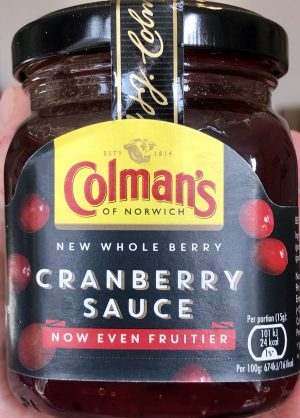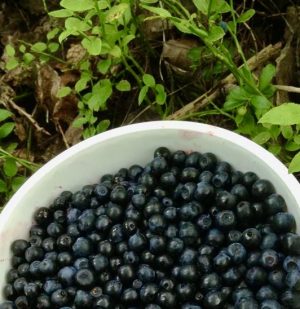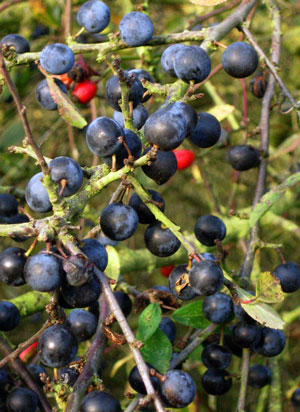Seasonal Fruits for Christmas

Winter, and Christmas in particular, is linked with foods and flavours that perhaps we do not experience at other times of the year. Think of the distinctive smell and taste of the Christmas Pudding with its many ingredients, the cranberry sauce with the turkey, mince pies (with their mixed fruits) and perhaps exotic crystallised figs; all examples of seasonal fare. The ingredients for some of these may be raised in your garden or come from much further afield.
If we look back in time, then our ancestors would have gathered, stored, and preserved a wide range of foraged fruits and ‘seeds’ to ‘see them through’ the harsher winter months. They had techniques and recipes for preserving fruits / roots etc. through the winter when fridges and freezing had not been thought of; except for the ice houses on the estates of the landed gentry. In relatively recent times, there has been renewed interest in foraged food such as chestnuts, sloes etc - see Richard Mabey’s book “ Food for Free."
Currently there is interest in encouraging consumption of locally produced and seasonal foods, rather than relying totally on imported foods or those that have to be grown in heated greenhouses. Reducing our reliance on imported food means what we do eat will have fewer ‘air miles’ and a lower carbon footprint. However, many farmers in poorer countries rely heavily on the demand for their ‘exotic’ produce, such as out of season avocados and soft fruits, and indeed flowers. Significant areas of food production in the UK, such as in Kent, are now covered with polytunnels and heated greenhouses, growing out-of-season fruit and vegetables to meet our desire to have such food available all year round.
 One fruit that can be gathered in the wild is the cranberry. Our native cranberry (Vaccinium oxycoccus) has quite small berries and needs to be picked by hand. It tends to grow in wet, northern moorland areas. However, the cranberry sauce for the turkey is likely to be made from the North American species V. macrocarpon - which has bigger berries and can be harvested mechanically. Botanically related is the bilberry (Vaccinium myrtilus). These used to be collected in some quantity for pies and jam, but have been largely superseded again by the larger American blueberry (Vaccinium corymbosum).
One fruit that can be gathered in the wild is the cranberry. Our native cranberry (Vaccinium oxycoccus) has quite small berries and needs to be picked by hand. It tends to grow in wet, northern moorland areas. However, the cranberry sauce for the turkey is likely to be made from the North American species V. macrocarpon - which has bigger berries and can be harvested mechanically. Botanically related is the bilberry (Vaccinium myrtilus). These used to be collected in some quantity for pies and jam, but have been largely superseded again by the larger American blueberry (Vaccinium corymbosum).
In Sweden - the lingonberry or cowberry (Vaccinium vitis-idaea) is found in their boreal forests and the artic tundra. The berries are quite ‘sharp’ and are usually cooked and sweetened to make a jam or compote. Lingonberries also contain benzoic acid, which acts as a natural preservative in the jams and other preparations. Lingonberry sauce or jam may be served with meat (from reindeer) or meatballs. A swedish dessert served at Christmas is the lingonpäron, which is made from pears - peeled and boiled and served in lingonberry juice (lingondricka).

 All of these berries offered a source of Vitamin C during the winter months when little else was available. Rose hips were also collected and made into a syrup - which was another good source of Vitamin C, aka ascorbic acid . Vitamin C helps the body make collagen, which has a vital role in the skin and connective tissues; it protects the body from scurvy.
All of these berries offered a source of Vitamin C during the winter months when little else was available. Rose hips were also collected and made into a syrup - which was another good source of Vitamin C, aka ascorbic acid . Vitamin C helps the body make collagen, which has a vital role in the skin and connective tissues; it protects the body from scurvy.
Another winter fruit was the sloe from the Blackthorn (Prunus spinosa). Sloes are much used in the making of sloe gin, though they can also be used to make jams & chutneys. Other winter fruits included crab apples, haws (from hawthorn), service berries (from Amelanchier sp) and medlars. Both medlars and service berries need to “blet” (rot) before they can be eaten - their somewhat special taste becomes tempered by the first frosts of autumn. Quinces may also be subjected to bletting by frost. However, they can also be cooked or roasted and then used for jams, marmalade, jellies, or puddings.
Apart from such homegrown fruits. Christmas used to be a time when other more ‘exotic’ foods were available. These might have been the oranges in the children’s stockings, or dates, mince pies (filled with dried fruits and spices), cakes with marzipan (made from almonds) and icing. Now, as mentioned, we expect world-wide and ‘seasonal’ produce to be available all year round.
With thanks to Fredrika for jpgs of freshly collected blueberries and the 'Lingon Grova' van in Stockholm..
Comments are closed for this post.

This is a lovely article – highly informative and really inspiring – thank you :)
Kim Sweet
18 December, 2019